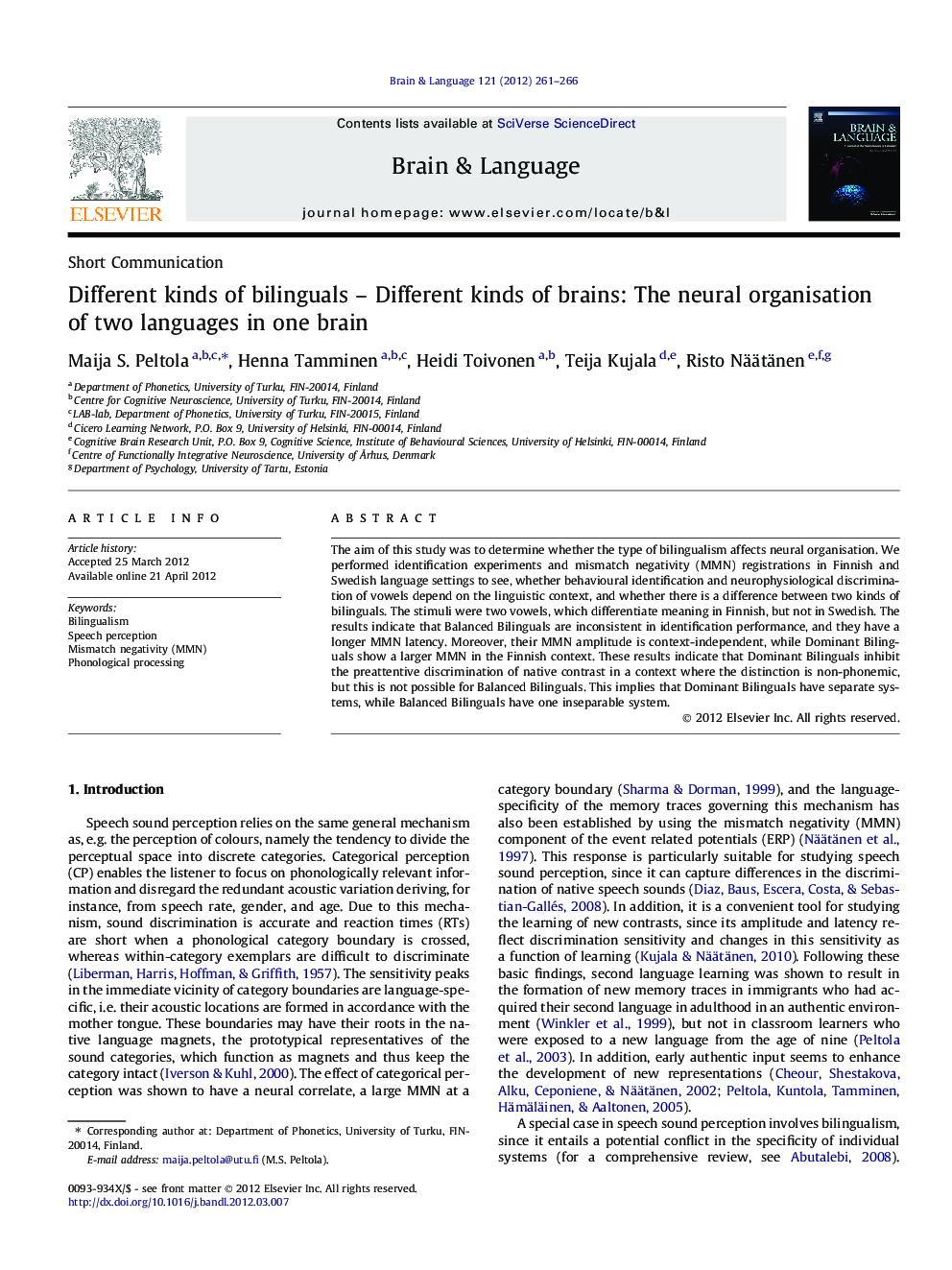| Article ID | Journal | Published Year | Pages | File Type |
|---|---|---|---|---|
| 925451 | Brain and Language | 2012 | 6 Pages |
The aim of this study was to determine whether the type of bilingualism affects neural organisation. We performed identification experiments and mismatch negativity (MMN) registrations in Finnish and Swedish language settings to see, whether behavioural identification and neurophysiological discrimination of vowels depend on the linguistic context, and whether there is a difference between two kinds of bilinguals. The stimuli were two vowels, which differentiate meaning in Finnish, but not in Swedish. The results indicate that Balanced Bilinguals are inconsistent in identification performance, and they have a longer MMN latency. Moreover, their MMN amplitude is context-independent, while Dominant Bilinguals show a larger MMN in the Finnish context. These results indicate that Dominant Bilinguals inhibit the preattentive discrimination of native contrast in a context where the distinction is non-phonemic, but this is not possible for Balanced Bilinguals. This implies that Dominant Bilinguals have separate systems, while Balanced Bilinguals have one inseparable system.
► We study attentive and preattentive speech sound perception in two language contexts. ► We compare two kinds of bilinguals, i.e. balanced and dominant. ► Behaviourally Balanced Bilinguals show more variation in category boundary locations. ► Dominant Bilinguals show context-dependent MMNs, Balanced Bilinguals do not. ► Balanced Bilinguals have an intertwined system, dominants have two separate ones.
